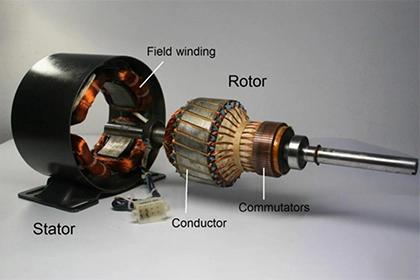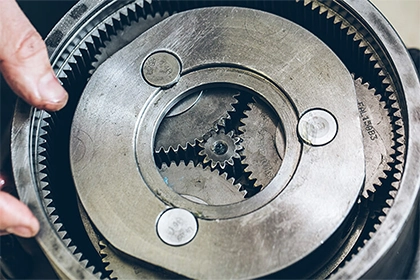
Reducing the RPM of a Single-Phase AC Motor
In this article, we will explore the reasons behind the need to reduce motor speed, the methods to achieve this, and the considerations to keep in mind.
Single-phase AC motors are commonly used in various applications, from household appliances to industrial machinery. These motors typically operate at a fixed speed, but there are instances where reducing the RPM (revolutions per minute) of a single-phase AC motor is necessary. In this article, we will explore the reasons behind the need to reduce motor speed, the methods to achieve this, and the considerations to keep in mind.
Understanding Single-Phase AC Motors
Before delving into reducing the RPM of a Single phase motor, it's crucial to have a basic understanding of how these motors work. Single-phase AC motors rely on a single alternating current to generate a rotating magnetic field, which in turn drives the motor's rotor. They are commonly used in applications that require moderate power and do not require precise speed control.
The Need to Reduce RPM
There are several reasons why one might need to reduce the RPM of a single-phase AC motor. Some common scenarios include:
-
Overheating: If a motor is running at a higher speed than its designed capacity, it may overheat. Reducing the RPM helps to mitigate this issue by reducing the load on the motor and allowing for proper cooling.
-
Noise Reduction: High-speed motors can generate excessive noise, which can be undesirable in certain applications. By reducing the RPM, the motor operates at a quieter level, improving the overall user experience.
-
Power Consumption: Motors running at higher speeds consume more energy. By reducing the RPM, power consumption can be reduced, resulting in energy savings.
Methods to Reduce RPM
Now that we understand the reasons for reducing RPM, let's explore the methods to achieve this.
Method 1: Changing Motor Pulleys
One of the simplest ways to reduce the RPM of a single-phase AC motor is by changing the motor pulleys. By using a larger pulley on the motor and a smaller pulley on the driven load, the speed ratio can be altered, resulting in a reduced RPM.
Method 2: Using a Gearbox
Another effective method is to introduce a gearbox between the motor and the load. The gearbox provides gear reduction, allowing the motor to operate at a higher speed while reducing the output speed. This method is commonly used in applications that require precise speed control.
Method 3: Variable Frequency Drive (VFD)
A Variable Frequency Drive (VFD) is an electronic device that allows for precise control of motor speed. It achieves this by varying the frequency of the supplied voltage to the motor. By using a VFD, the RPM of a single-phase AC motor can be easily adjusted to meet specific requirements.
Considerations and Limitations
While reducing the RPM of a single-phase AC motor can be achieved using the aforementioned methods, there are some considerations and limitations to keep in mind:
-
Torque and Power: When reducing the RPM, it's important to ensure that the motor still provides sufficient torque and power for the intended application. Lowering the RPM may affect the motor's ability to deliver the required performance.
-
Temperature Rise: Reducing the RPM can result in increased heat generation within the motor. It is crucial to monitor the motor's temperature to prevent overheating and potential damage.
-
Efficiency: Some methods of reducing RPM, such as changing pulleys, may result in reduced overall motor efficiency. It's important to consider the trade-off between RPM reduction and energy efficiency.
-
Compatibility: Not all single-phase AC motors are designed to be easily adjustable in terms of RPM. It's essential to consult the motor's specifications and seek professional advice to ensure compatibility with the selected RPM reduction method.
Conclusion
Reducing the RPM of a single-phase AC motor can be necessary in various situations to address issues such as overheating, noise reduction, and energy savings. By employing methods such as changing motor pulleys, using a gearbox, or utilizing a Variable Frequency Drive (VFD), the RPM can be effectively reduced. However, it's important to consider factors such as torque, power, temperature rise, efficiency, and motor compatibility when implementing RPM reduction methods. By understanding these considerations and limitations, you can make informed decisions to achieve the desired RPM reduction in single-phase AC motors.



Leave a Comment